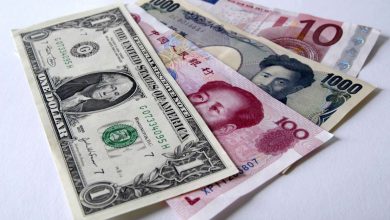Nigeria’s Trade Deficit Widens in Q3 2021 ,Oil accounts for 90% of Exports

If Nigeria is to grow to support a population of 200m people it must do better than its recent external trade numbers. Data released by the national bureau (NBS) showed that in the third quarter of 2021 (Q3), merchandise trade rose by 51% Y-o-Y to N35.07trn. The country’s trade deficit widened by 90% Y-o-Y from (N4.64trn) in 9M 2020 to 8.84tr in 2021. The worsening trade balance was driven by a 60% increase in imports while exports rose 41%
The data also shows that crude oil contributed about 90% of total exports exceeding the 80.29% contribution as of H1 2021. Analysts have expressed concerns not only about the rising trade deficits but also the country’s monolithic export profile.
Unpacking the External Trade Suitcase
The 51%Y-o-Y rise in trade merchandise can be attributed to the sharp growth in Imports, which soared by 60% Y-o-Y. An analysis of the imports numbers shows that the importation of Motor spirit ordinary, Durum wheat, Gas Oil as well as Machinery, and Transport equipment account for a substantial portion of the country’s imports in the period.
Meanwhile, the country’s import bill for the three months to September 2021 rose by 17% from N6.95trn in Q2 2021 to N8.15trn in Q3 2020. Exports on the other hand rose by 6% Q-o-Q in Q3 2021. The marginal increase in exports in the third quarter was driven by trade in Petroleum Oils and gases, Natural Gas Liquified as well as fermented cocoa beans.
Imports rose to N22trn the country’s highest 9month import, surpassing the N14trn import recorded in the corresponding period of last year a development which can be attributed to the depreciation of the Naira. Nigeria’s 9-month exports on the other hand came in at N13.12trn slightly above its four-year average of N12.73trn.
Of the nine months in the year, September saw the largest volume of exports N2.04trn which is higher than the value exports in June(N1.8trn) the second-highest monthly export.
Of Trade and Deficits
Analysis of the trade data showed that the 9month trade deficit recorded in 2021 exceeds the 2020 figure. Although total trade rose by about 50%, the trade deficit rose by 90% from (N4.6trn) to (N8.8trn). On a 3-month basis, Nigeria’s trade deficit which came in at N1.9trn in Q2 2021, saw a 61.5% increase Q-o-Q to steady at N3.02trn for the period between July and September
Import cover looking good
With 9-month imports currently at N22trn (and an exchange rate of 411.74/$), the country â six-month imports are around $36bn. According to the CBN, Foreign reserves are as of December 6 above $40bn which implies that import cover is about 6.7months. According to the IMF, import cover was 5.54months in 2020 when the reserve was hit by low slung oil prices.
Sectoral Deep Dive
The NBS data for Q3 2021 shows that Crude oil transactions accounted for 89% of total merchandise exports, the largest in volume. Other products traded amounted collectively to 11%, while Manufactured goods contributed 5.77% of the total merchandise exports. The Agricultural sector contributed 2.83% to total exports in the period under review. Analysts are of the view that the contribution of the crude oil sector increased from 80.29% in H1 2021 to 89% in the period under review because of rising crude oil prices (see Chart 2 below).
Import of Motor spirit was responsible for 12.91% of total imports in Q3 2021, this is up from 11.26% in Q3 2021. Conversely, the Imports of Durum accounts for a slightly lower proportion of total import in Q3 2021 (3.87%) compared to the 4.67% of total import it accounted for in Q2 2021. Manufactured goods represent 62.55% of the 9 Month 2021 Import bill, Oil production the other hand account for about 16% of total Imports Of the nine months in the year, August saw the largest volume of imports – N2.9tr, which is higher than July’s Imports(N2.68tr) the second highest.
Nigerian Exports; the Europe Dash
In the three months to September 2021, exports to Europe and Africa increased by 22% and 14.4% respectively, while exports to Asia and America dropped by -19.6% and -22.4% respectively. Specifically, Nigeria’s exports to India- its largest trading partner- decreased by -20% Q-o-Q. A similar scenario played out with the USA where total Nigerian exports declined by -10.6% during the three months.
Despite the cutback, India remained Nigeria’s largest trading partner (exports) as it accounted for N758b in exports, an amount that exceeds total exports to Africa (N668bn) in the period. The Indian economy has for some time been a major buyer of Nigeria’s oil. However, growth in the South-East Asian economy slowed down to 8.4%in the July – September 2021(
Proshare Analyst however noted a computational error in the export figures detailed in the recently released report. In table 5 of the excel spreadsheet downloaded from the Bureau’s website, ‘Total exports’ to Europe do not tally with the sum of exports stated under each of the listed European countries and those captured under the category of ‘others’. The computation here may require revisiting by the Bureau.
The Zero Oil Plan and Other Matters Arising
With Crude and Other oil products accounting for 90% of exports, while amounting also to several multiples of non-Oil exports the need for a diversified export base is obvious
A monolithic export profile exposes the economy to the vagaries of the international oil market. Crude oil prices had tumbled to lower than $65/b last week after trending as high as $85/b in October. Nigerian oil exports had collapsed by a huge US$100 billion between 2015 and 2017, a situation which persisted till OPEC agreed to lower output by 1.2 million barrels per day.
Through the zero oil plan introduced last year, the federal government targets generating $100 billion export earnings from 22 primary non-oil goods in ten years- an equivalent of 20% of Nigeria’s Gross Domestic Product (GDP). Through the various value-chains to be created under the zero-oil policy, up to 500,000 new jobs are expected to be created, which in turn would reduce the country’s rate of unemployment and spur growth.
It however doesn’t seem the country’s zero oil strategy is achieving its objective of driving greater exports, according to the Nigeria Export Promotion Council Nigerian primary products face a major challenge of meeting safety standards. The safety and quality standards need to be prioritized in other to improve the international perception of Nigerian products. Likewise, the NEPC needs to look into the prospects of linking the agricultural value chain to producers of semi-finished exportable items to raise the complexity index of the country’s exports.




